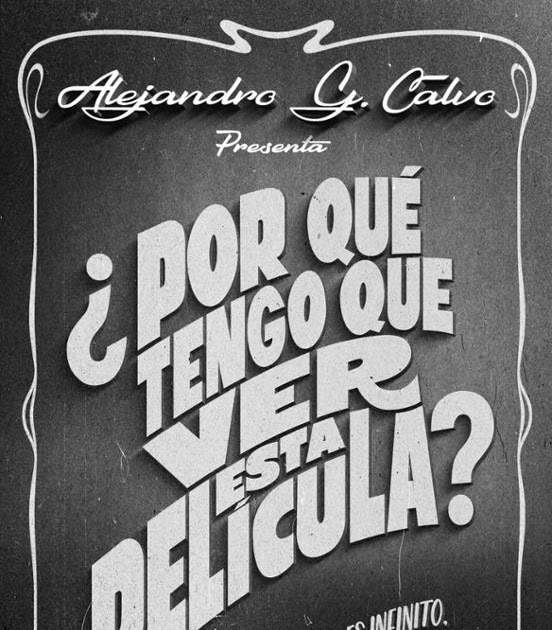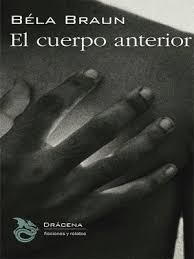
Language: español
Year of publication: 2025
Valoración: Advisable
If there is something that I love, not as much as watching movies, but almost, it is hearing about cinema and reading about cinema (obviously, people who know the subject). Both activities often fulfill them, in recent times, thanks to critic Alejandro G,. Calvo, through both the Espinof website and the YouTube Sensacine channel, which I recommend from here to everyone. And now, for Solaz of his followers and also from anyone who likes to discover or rediscover films, we have at our disposal a second book written by him, after the previous one A movie for each year of your lifein which he reviews a somewhat heteroclite set of films, but for him they are all very remarkable, when not masterpieces. These are 45 works – in reality, quite more, because Calvo takes the opportunity to also tell us about other films of the director or director of the chosen title – that the author seems to have selected following a totally personal criterion that may seem random … come on, that he has chosen what has come out of the Pirri. No problem, on the other hand, because, as I say, it is in all cases of cime works or, at least, films esteemed enough for the critic to present them as if they were (I attest, since I have seen enough of those commented, although I confess that not all).
Although, perhaps to hide that the criterion of choice has been the one that has won the author or for putting some order in the set, I do not know, the book is structured, in different thematic chapters where the different titles commented are grouped. Thus, it begins with the apparently arbitrary -although you will see that it has its logic – Film to start the first volumewhich is none other than The door of heaven by Michael Cimino, not only a magnificent film, but also epitome of what cinematographic madness supposes. Continue with 5 films that I did not put in the previous book (It is clear that Alejandro G. Calvo considers his literary works as a continuum, since allusions to a probable second volume of Why do I have to do etc Nothing to object, either here); I am not going to put the entire list of all the aforementioned titles, but in this section we find, for example, Matrix of the Wachowski or The silence of a man by Jean-Pierre Melville. Next section, especially dear, I suppose, for the author: 13 films to embrace Spanish cinema; Eye, it is not about the thirteen best movies in Spanish cinema -although there are some, such as The spirit of the hive by Víctor Erice or Stoker of Borau, which appear in all lists- but of tapes that the critic, for one reason or another, are esteemed, claimable or simply endearing. In this sense, the vindication it makes of two directors, José Luis Romero Marchent and Eugenio Martín, architects or even parents of the spaghetti western Spanish (I have read the term around chorizo westernbut it seems only appropriate when it comes to a film about four -year -old, bench thieves or treasurers of certain political parties) and the fantateror of the 70s, respectively.
In 5 desperate moviesCalvo tells us about films in which the protagonists are committed, irremediably, to a fledged escape that can only lead them to a tragic destination. For example: The Law of Desire of Almodóvar the Caught by his past from Brian de Palma (there is Na). Then come 3 ribbons of John Ford -It couldn’t miss and 1 movie I don’t know what to do with her. What is it? Well The secret of his eyesby Argentine Juan José Campanella, although it is obvious that Calvo does know what to do with her (put it through the clouds). So far the book is fine, it is entertaining, interesting, whatever you want … but it is the next section that makes it absolutely recommended, if you allow me such subjective bias: 10 films to stop being afraid of terrorwhere we find unquestionable classics, such as Nosfer of Murnau, the Shaun… I say Dawn of the Dead of Romero, the first Alien of Ridley Scott -which is not only a horror movie, but it is also a slasher in full rule-, other classics equally unquestionable but even more bizarre bold (grab that they come curves): THE MIMBRE MAN from Robin Hardy, The demons by Ken Russell and Possession of Zulawski-, along with some title that may surprise purists, although I think it has long been incorporated into the fee: Se7en by David Fincher.
The following blocks are dedicated to 5 Summit works led by women (I disagree with some of these movies, but that is my thing), made by current filmmakers such as Sofia Coppola, Andrea Arnold, Coralie Fargeat, Kelly Reinchart and Lynne Ramsay, and 4 films that will break your heartof those designed to excite even the stones, such as On the street De Phelles, Brokeback Mountain of Ang Lee or Brief encounter by David Lean (I could have put here Wishing to lovebut he is already in his previous book, I don’t know). This self -denominated first volume closes with another cinema totem, even more for those who are considered cinephile: Vertigo (among the dead) of Alfred Hitchcock. Because first of all that gives off this book is an unconditional love to cinema. Alejandro G. Calvo is not at all those harsh, moody or disdainful critics (and I am not thinking of anyone … ahem) for which everything that is done today is a mediocrity that does not reach the sole of shoes to the works of the great masters of the celluloid. On the contrary, Calvo includes among the films that are passionate from mute cinema classics to titles released in 2024, such as Aor, Second prize or substance. On the other hand, enthusiasm, bonhomy and even sympathy of the author are qualities that he knows how to convey and convert the reading of these cinematographic criticisms? (I would say Elegías) In fun and stimulating.
Now, as demerit of the book and for looking for something, we could tell, precisely, that enthusiasm and good -work, the empathy that the writer generates at all times, who sometimes can be a bit forced, with his continuous and repetitive allusions to his biography (although I recognize that I love the anecdote when he sneaked into the house of Stephen King and scared away him Tabitha?), To his trips, his family, his insomnia, his physical discomforts and his mental exhaustion. Yes, a friend Alejandro, that the critic’s life is very hard and less bad that you have a lot of great people who support you, if all that is very good, but one thing is to tell it occasionally in a video from Cannes and another in each chapter of a book, which would have to be read very little, therefore, so that it does not tire … the same, to some extent, can be said about their artistic assessments, which sometimes adoleste good education, which sometimes adoles He affirms that Jota’s voice, the singer of the planets, “always plays to hide behind music”) or, already put, some lack of criteria; He loved, for example A love From Sara Mesa, which is already necessary to be innocent … (for not putting cinematographic examples, in which her overwhelming knowledge prevents me from taking the opposite). But, well, these details give the same. The important thing is not only that he gets one to spend it (never better) reading this book but, above all, that they want to see or see all the movies he speaks and many more. That is what he tried, I suppose and, of course, he gets it far. After all, as Aute sang: “MAny cinema, please … that everything in life is cinema and dreams, cinema are …“
Post-recensia: For those who like cinema, but do not have or repay an idea (like me) I leave here a link to the last video of “movable to significant” of this generous critic, about the formal elements of cinematographic language, which is a true wonder.
Source: https://unlibroaldia.blogspot.com/2025/07/alejandro-g-calvo-por-que-tengo-que-ver.html


